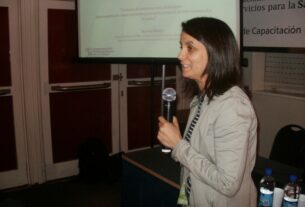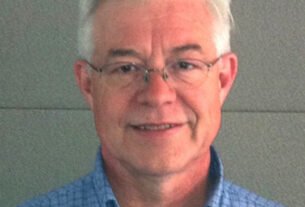The result of the meeting with Andrés Fernández and Javier Carnicero was a friendly conversation about the Spanish experience with medical information technology and the solutions medical information can offer in the Region, with the added bonus of an exclusive: the imminent launch of an electronic healthcare manual for healthcare directors, focused on Latin America, which will be available on the website.
Ehealth Reporter Latin America: At your presentation at the SUIS congress and SUEIIDISS in Uruguay you stated that Healthcare IT has become just another aspect of healthcare technology, as necessary as any other. How did you come to that way of thinking?
Javier Carnicero: That is essentially what I believe. A few years ago it was thought that a family doctor in Spain went into his surgery with a stethoscope, a reflex hammer, paper and a pen and nothing else, maybe they’d also have a tool to measure blood pressure. Then they assimilated the electrocardiograph into the surgery and maybe shared a spirometer with a few other doctors. Today, it’s inconceivable for a doctor to go into a surgery with just a reflex hammer and a stethoscope.
EHRLA: Do you think that Spanish doctors have now gotten used to using IT in their surgeries?
JC.: For ten years now in Spain, when someone walks into their family doctor’s surgery, the doctor has been able to use their computer to read the patient’s electronic clinical history, which is extremely useful because it saves ten minutes interviewing the patient. Now they have the information, for example, that the day before the patient was in the emergency room and was given such and such a treatment; they can also consult test results which previously took several days to arrive, what had once been delivered by mail is now on a computer screen and can be immediately confirmed by the doctor in the laboratory. So it has become just another working tool, like a hammer for analysing reflexes or the stethoscope. That’s why I say that it is another example of healthcare technology like the MRI or CAT scan. But I also believe that one needs to be there, as they say in Spain: “through thick and thin,” one has to be there to reap the benefits but also endure the costs. This means that healthcare IT must demonstrate that it is secure, effective and provides added value, and that we need to get used to making this kind of evaluation continuously. No responsible public service purchases an MRI scanner without determining whether it is necessary, effective or if it’s going to improve patients’ quality of life. The same applies for IT.
EHRLA: And with regards to the benefits for the doctor in their practice, how can these be demonstrated?
JC: You have to emphasize the value of IT in improving the safety of patients by reducing errors in medication or improving the speed with which a treatment is implemented and this is shown by the numbers.
Andrés Fernández: In addition to what Javier says, in our case in Latin America you’d have to add the aspect of access. This is a key factor for us because we have a large amount of the population with limited access to health services and so when we’re talking about assessment, one of the things that we need to start evaluating is how, with the implementation of IT and especially that with telemedicine applications, we are improving access for patients who live in isolated areas or who belong to vulnerable populations, who can now begin to receive proper care.
EHRLA: In this regard, different telemedicine programs are being implemented in Amazonia and Peru, and even in Argentina there was a recent case of the area of Mercedes which just won an award. However, as you stated, concrete evaluations of its effectiveness have not yet been made. It also seems key, as well as having a proper information technology system, to have the proper human resources available to use these technologies: are these sufficient?
AF: We agree that there is a need for human resources training to use telemedicine in remote areas and it must especially be borne in mind that usually no doctors are present. In remote areas, one often finds a healthcare assistant or local leader who has the opportunity to learn about these subjects and they need to be trained to be able to use the technology which is made available to them. Very interesting situations are also occurring in places like Panama, for example, where a village has installed a telemedicine service next door to a shaman’s practice.
EHRLA: Might one say that medical information technology is responding to different needs in Europe than in Latin America?
JC: There are aspects both have in common, such as making information available to doctors, and others which are more useful in America than in Europe, such as telemedicine; for us physical access to healthcare centres is not usually a problem. But, for example, in situations where healthcare is lacking in human resources, it can also be a solution. We have telemedicine in the Canary Islands, for example. Also the armed forces have missions overseas, for example in Afghanistan, etc. and for them it is very useful for the lightweight health system. It is useful, for example, in providing access and avoiding misplacement in the case of diabetics and chronic patients. We also have retinographs which make it possible to carry out long distance scans of the back of the eye.
EHRLA: Is there any kind of formal cooperation between Spanish and Latin American schemes which is perhaps more in the planning stages?
AF: On these subjects, CEPAL began to make headway thanks to significant help from the European Commission and in this context we are making contact with SEIS, where Javier comes from and where we are developing several joint initiatives. Among them is one that is very important to our governments: the development of an electronic healthcare manual for directors of healthcare systems which we hope to be able to distribute at the end of this year or the beginning of the next.
EHRLA. Will the manual be available on the website?
AF: Of course. Written copies will be distributed but it will also be available on the CEPAL website, in both Spanish and English for Caribbean countries and of course European ones. Here we are confronting common problems; although there are individual differences, there are also common problems. And one of those problems is that one must convince the authorities about what needs to be done, why and how.
JC. This manual is presented as an educational aid to presenting a project to authorities. For example, if we want to explain to our boss why we need to install an information technology system in our laboratory, this document can help. It has the dual function of being used as a working tool and as a basis for making an argument to decision makers.
EHRLA: Is there any kind of subsidy or financing available for governments which focus on diagnostics?
AF. The mandate we have from the European Commission is basically to share our experiences which could be replicated in different countries in the region. Our efforts have been centred basically on two things: one is generating cooperation networks between experts in the region and in Europe; but also to build and systematize experiences which are useful to share.
EHRLA: What are these experiences?
AF: We are also going to publish and make available on the website the experience of the Hospital Italiano de Buenos Aires, the FEMI experience in Uruguay financed by IDB and we hope to be able to do the launch of the SOS Telemedicine program in Venezuela. In Chile there are several initiatives but what seemed to us to be the most relevant, to demonstrate several things, is how connectivity has been implemented in the different health services throughout the country. An infrastructure has been built on which it is now possible to install new healthcare information technology systems, for example in the area of telemedicine.


